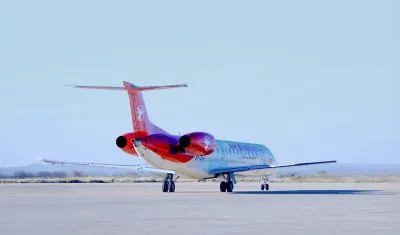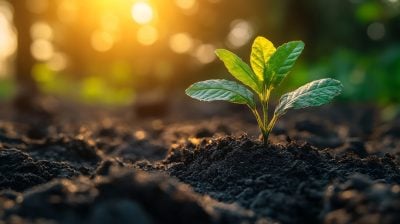Equatorial Guinea has been the fastest-growing economy in Africa over the past 15 years and one of the fastest growing in the world. There is one simple explanation for this transformation – the discovery of substantial offshore oil and gas reserves.
After Nigeria and Angola, it is in the second rank of African oil producers alongside Sudan, South Sudan and neighbours Congo-Brazzaville and Gabon.
The oil boom combined with a small population has generated GDP per capita that is comparable with some countries in the industrialised world.
Some commentators have described Equatorial Guinea as the ‘African Kuwait’. This overstates the size of the reserves discovered to date but does give a good indication of the effect of the finds upon the country.
It is the richest country per capita in Africa. Figures vary according to weighting for currency changes and purchasing power parity (PPP) but according to the IMF World Economic Outlook, GDP per capita increased from just $2,200 in 2000 to $8,201 in 2006 and $23,789 in 2012. When adjusted for the cost of living, the figure for 2012 rises to $26,487.
GDP increased tenfold in the decade after 1999, changing the economy out of all recognition. Growth was irregular as it was based on the commencement of oil production on different fields but included a massive 31.7% increase in 2004.
Crude oil and LNG exports account for about 80% of government revenues and 95% of export income. Aside from oil, gas and related industries, forestry, cocoa and coffee are the most important sectors. The second-biggest source of export revenue, timber, accounts for just a tiny proportion of economic activity.
The lack of new oil and gas production in recent years has resulted in a slowdown in the rate of growth. GDP increased by 5.5% in 2012 and an estimated 4.9% last year but growth is widely expected to be more limited in 2014. It could even decline if, as expected, oil prices fall during 2014.
However, after successive years of a budget deficit, government revenues are now matching expenditure and Malabo recorded a surplus of 6% of GDP in both 2012 and 2013.
The oil boom has driven rapid economic expansion over the past 15 years but the benefits for the bulk of the population have been limited in terms of job creation and living standards. Much more needs to be done to reduce poverty levels, tackle disease and improve water and wastewater services.
Unemployment is also a major problem, as the oil and gas industry generates relatively few jobs in relation to its contribution to GDP – a fact that is recognised by the government.
In recent years, Malabo has funded billions of dollars worth of infrastructural projects, such as road and port improvements, as part of the first phase of the government’s Vision 2020 strategy.
However, the government has long made it clear that it intends to diversify the economy away from its dependence on oil and gas. It now aims to use oil revenues in Phase 2 to set up joint ventures with foreign investors in a variety of sectors that can make use of that infrastructure and create much-needed employment.
Diversification strategy
Malabo has drawn up a list of the most likely options for diversification: agriculture, fishing, mining and petrochemicals, tourism and financial services.
A total of $1bn a year over the next five years is being provided by Malabo to fund government shares in these joint ventures. After three years, foreign investors will have the option to sell their stakes to the government if they wish to withdraw from the country.
The Emerging Equatorial Guinea forum is designed to help attract this investment. Equatorial Guinea possesses some limited copper, gold iron ore, manganese, rutile, titanium and uranium deposits but commercial development is limited to small-scale alluvial gold production.
Creating linkages between the oil sector and the rest of the economy would be a big step forward. Given the respective sizes of the country and the economy, it is unsurprising that almost all of the money spent on oil services, hardware and personnel has gone abroad.
Some reforms have been introduced over the past 15 years to encourage domestic, private sector companies, including the removal of quotas, some licensing requirements and import tariffs but much more needs to be done to free up the economy and promote socio-economic freedom.
The IMF neatly summed up the country’s long term economic prospects in 2011: “Equatorial Guinea’s largely oil-driven economy was hit hard by falling oil prices in the wake of the global crisis. While oil prices have bounced back, the absence of large discoveries make it likely that oil production will decline over the medium term. Without strong domestic engines of growth, economic activity will slow jeopardising development goals and hopes of more inclusive growth, while sustained spending of oil wealth will run down government deposits.
“Even if more oil is discovered, the economy’s oil dependence would leave it highly vulnerable to external shocks. Economic diversification is vital to future welfare.”
Domestic businesses could make the most of the country’s membership of the Economic and Monetary Community of Central Africa (CEMAC) and other regional financial groupings that are in the process of being widened into trade blocs.
Regional integration and cooperation has already paid dividends to the country. Equatorial Guinea joined the Bank of Central African States (BEAC) and Communauté Financière Africaine (CFA) franc zone in 1988, providing monetary stability and a fixed exchange rate with the euro.
This policy has helped to contain inflation and provide the stability required by foreign investors operating in hard currency.
Annual inflation currently fluctuates around 4% and is expected to remain at about this level for the foreseeable future.
The country has also taken on many of the characteristics of the Napoleonic code of law common to Francophone countries and adopted French as an official language alongside Spanish in 1997 in an effort to boost trade with the wider region.
A CEMAC free trade zone has been agreed but implementation is proving difficult and the states of Central Africa are still much less integrated than those of the Southern African Development Community (SADC) and East African Community (EAC).
Equatorial Guinea has experienced stronger economic growth than the wider Central African region and holds 25% of CEMAC common reserves.
In December 2013, the CEMAC central bank predicted that economic growth in the bloc would reach 5.3% this year, up from 2.6% in 2013 and in line with the IMF forecast.
Central bank governor Lucas Abaga Nchama called for greater economic diversification in Central Africa, which generates an incredible 87% of its export revenues as a region from oil.
The bank cut its main lending rate to 3.25% in November in response to weak growth last year that barely kept up with population growth.
Want to continue reading? Subscribe today.
You've read all your free articles for this month! Subscribe now to enjoy full access to our content.
Digital Monthly
£8.00 / month
Receive full unlimited access to our articles, opinions, podcasts and more.
Digital Yearly
£70.00 / year
Our best value offer - save £26 and gain access to all of our digital content for an entire year!

 Sign in with Google
Sign in with Google 


